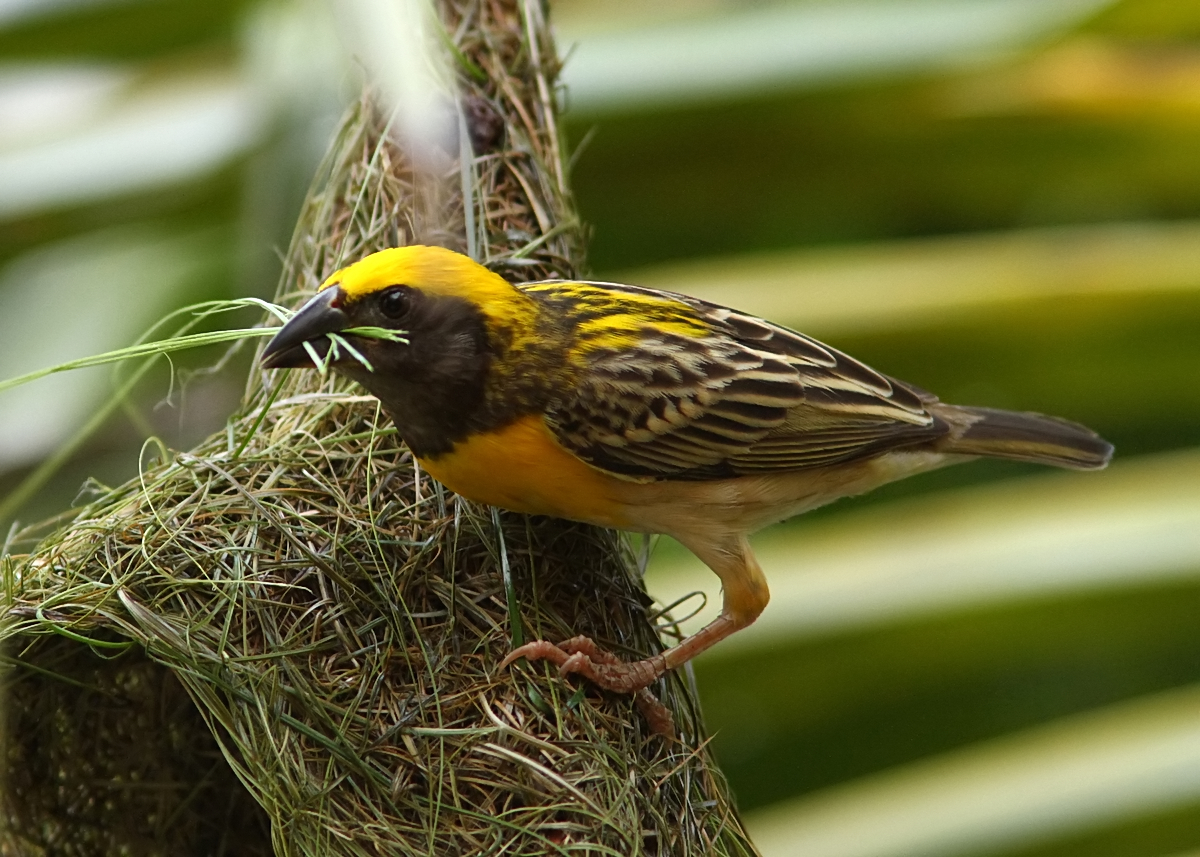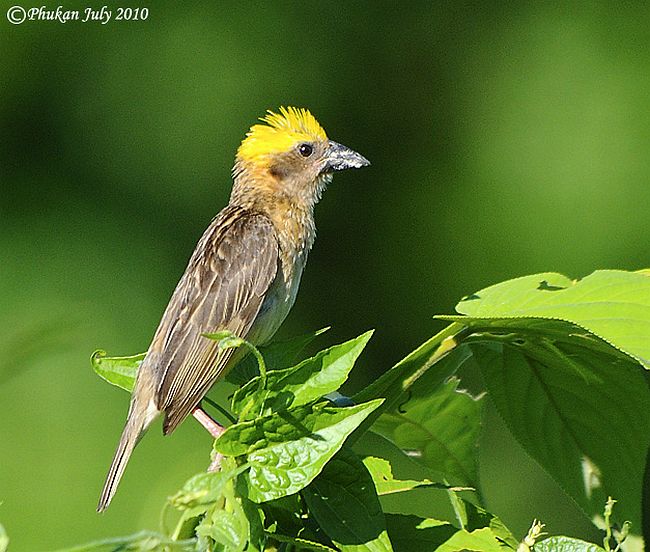
Ploceus philippinus
SUBFAMILY
Ploceinae
TAXONOMY
Loxia philippina Linnaeus, 1766, Philippines = Sri Lanka.
OTHER COMMON NAMES
French: Tisserin baya; German: Bayaweber; Spanish: Tejedor
de Baya.
PHYSICAL CHARACTERISTICS
5.1–5.9 in (13–15 cm); female 0.7–1.0 oz (20–28 g), male
0.7–0.9 oz (20–26 g). Breeding male, yellow crown, black face
mask, mottled brown upperparts, paler, unstreaked underparts;
bill black. Female and non-breeding male, mottled rufousbrown
upperparts, some streaking on underparts, bill brown.
Juvenile like female.
DISTRIBUTION
Pakistan, India, and Sri Lanka east to southwestern China,
south throughout Malay Peninsula, Sumatra, Java, Bali.
HABITAT
Forest edge, open savanna and scrub, cultivated areas. Appears
to prefer agricultural land.
BEHAVIOR
Gregarious in flocks, and forms large communal roosts in
reedbeds or sugarcane, together with other weavers, seedeating
birds, starlings, and bulbuls.
FEEDING ECOLOGY AND DIET
Adults mainly seed-eating, including rice, sorghum, millet, and
wheat. Also consumes insects, even frogs recorded, and young
fed primarily insects.
REPRODUCTIVE BIOLOGY
Colonial, polygynous. Nest is retort-shaped with entrance tunnel
of varying length, often suspended over water in trees or
bushes. Male builds nest, displays there to attract mates. Blobs
of mud, sometimes dung, regularly added to inside of nest.
Long-standing but unsubstantiated legend that male embeds
fireflies in mud, so that they illuminate the inside of the nest.
Lays two to five eggs, breeding from spring through to autumn,
depending on timing of monsoon. Incubation 14–15
days, fledging 13–16 days. Female alone incubates, male may
assist in feeding young. Nests robbed by snakes and crows.
CONSERVATION STATUS
Not threatened; locally common to abundant, and regarded as
a pest in grain-growing areas.
SIGNIFICANCE TO HUMANS
At times damages crops, so that farmers often systematically
destroy nests at egg or nestling stage.
Photo Gallery of - Baya weaver




 Animalia Life
Animalia Life